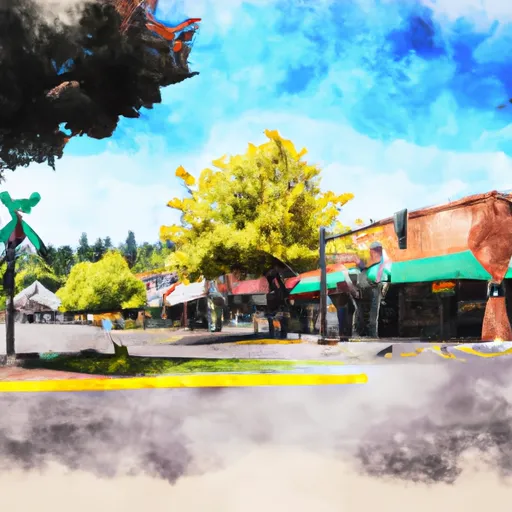-
 Snoflo Premium
Snoflo Premium
Get unlimited access to all our content
With no Ad interruptions! - Start Your Free Trial Login with existing account
Lyons
Eden Index
Climate
5.2
•
Recreation
4.4
•
Community
1.1
•
Safeguard
3.9/10

Lyons, Oregon is a small town located in Linn County, surrounded by stunning natural beauty and outdoor recreational opportunities. The climate in Lyons is a temperate Mediterranean type, with warm, dry summers and mild, wet winters. Summers are perfect for outdoor activities, with temperatures ranging from the mid-70s to mid-80s Fahrenheit, while winter temperatures usually hover around the 40s.
Hydrologically, Lyons is blessed with the Santiam River flowing nearby, providing a scenic backdrop and opportunities for water-based recreation. The river harbors various fish species, such as steelhead, salmon, and trout, making it popular for fishing enthusiasts.
Outdoor recreation options in Lyons are abundant. The nearby Detroit Lake offers opportunities for boating, water skiing, fishing, and swimming. Hiking enthusiasts can explore the Opal Creek Wilderness, known for its stunning waterfalls, old-growth forests, and crystal-clear creeks. For those seeking a more challenging adventure, the Santiam State Forest offers miles of trails for hiking, mountain biking, and ATV riding.
In summary, Lyons, Oregon, presents an ideal climate for outdoor activities, with the Santiam River and nearby recreational areas providing ample opportunities for water-based and land-based adventures.
What is the Eden Index?
The Snoflo Eden Index serves as a comprehensive rating system for regions, evaluating their desirability through a holistic assessment of climate health, outdoor recreation opportunities, and natural disaster risk, acknowledging the profound impact of these factors on livability and well-being.
Climate Health Indicator (CHI): 5.2
Lyons receives approximately
2126mm of rain per year,
with humidity levels near 84%
and air temperatures averaging around
9°C.
Lyons has a plant hardyness factor of
8, meaning
plants and agriculture in this region tend to thrive here all year round.
By considering the ideal temperature range, reliable water supplies, clean air, and stable seasonal rain or snowpacks, the Climate Health Indicator (CHI) underscores the significance of a healthy climate as the foundation for quality living.
A healthy climate is paramount for ensuring a high quality of life and livability in a region, fostering both physical well-being and environmental harmony. This can be characterized by ideal temperatures, reliable access to water supplies, clean air, and consistent seasonal rain or snowpacks.
Weather Forecast
Streamflow Conditions
Willamette
Area Rivers
Willamette
Snowpack Depths
Willamette
Reservoir Storage Capacity
Willamette
Groundwater Levels
Recreational Opportunity Index (ROI): 4.4
The Recreational Opportunity Index (ROI) recognizes the value of outdoor recreational options, such as parks, hiking trails, camping sites, and fishing spots, while acknowledging that climate plays a pivotal role in ensuring the comfort and consistency of these experiences.
Access to outdoor recreational opportunities, encompassing activities such as parks, hiking, camping, and fishing, is crucial for overall well-being, and the climate plays a pivotal role in enabling and enhancing these experiences, ensuring that individuals can engage in nature-based activities comfortably and consistently.
Camping Areas
| Campground | Campsites | Reservations | Toilets | Showers | Elevation |
|---|---|---|---|---|---|
| Silver Falls State Park | None | 1,350 ft | |||
| Feyrer Park | 20 | 373 ft | |||
| Whitcomb Creek | 39 | 1,334 ft | |||
| Yellowbottom | None | 1,656 ft | |||
| Cascadia State Park | None | 869 ft | |||
| Yukwah | 25 | 1,226 ft | |||
| Fishermens Bend | None | 766 ft | |||
| John Neal Memorial Park | None | 631 ft | |||
| River Bend County Park | 45 | 709 ft | |||
| Sunnyside Park | None | 658 ft |
Catastrophe Safeguard Index (CSI):
The Catastrophe Safeguard Index (CSI) recognizes that natural disaster risk, encompassing floods, fires, hurricanes, and tornadoes, can drastically affect safety and the overall appeal of an area.
The level of natural disaster risk in a region significantly affects safety and the overall livability, with climate change amplifying these risks by potentially increasing the frequency and intensity of events like floods, fires, hurricanes, and tornadoes, thereby posing substantial challenges to community resilience and well-being.
Community Resilience Indicator (CRI): 1.1
The Community Resilience Indicator (CRI) recognizes that education, healthcare, and socioeconomics are crucial to the well-being of a region. The CRI acknowledges the profound impact of these elements on residents' overall quality of life. By evaluating educational resources, healthcare accessibility, and economic inclusivity, the index captures the essential aspects that contribute to a thriving community, fostering resident satisfaction, equity, and social cohesion.

